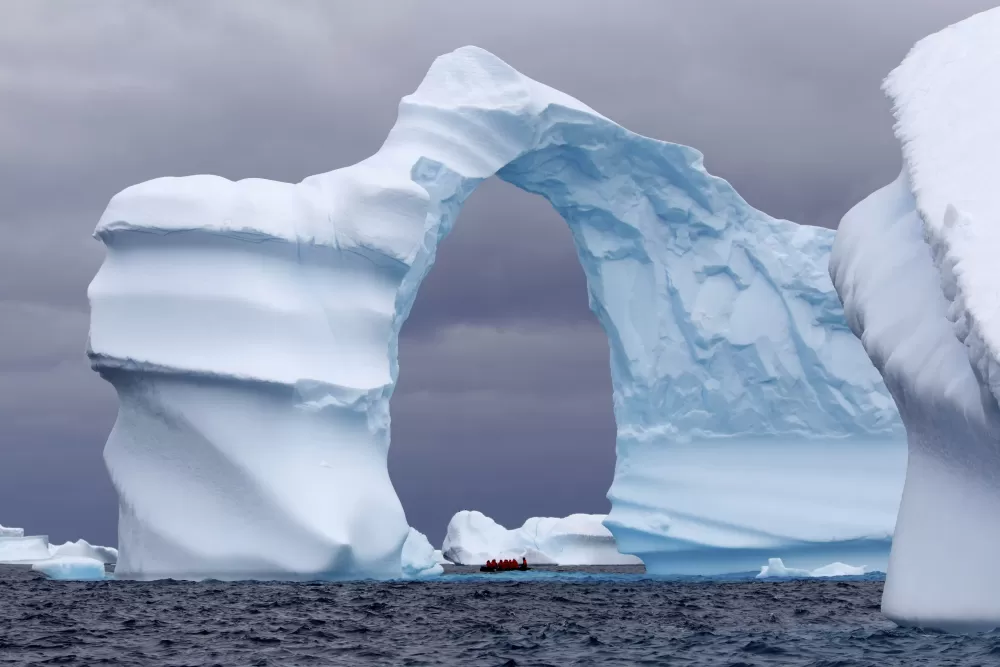Just Chilling

Antarctic traveler and travel writer, Chris Connelly, shares his experiences in the great white continent.
All Photos
Photo Album
Taking Some Time To Chill
Sep 16, 2015

Yes, it's a tad cold, but Antarctica offers some of the most spectacular scenery in the world, an unscripted nature show starring seals, whales, sea lions and a cast of approximately 400 gazillion penguins, as well as the pride that comes from looking at the bottom of a map and thinking, "Yeah. I've been there."
Let's discuss maps for a minute. We here in the States generally like maps with America in the middle. In Europe, fittingly, Europe is front and center. Africans and Asians and South Americans also like to occupy the most prominent spot on their maps, and Australians, well, honestly, I'm never quite sure what they’re up to. But unless you're looking at a nautical chart or a very specific type of map, you'll never find a global map with Antarctica in the starring role. Why? No one lives there. In fact, there is no such thing as an "Antarctican." The only people who live in Antarctica are scientists and people who are paid to live in Antarctica. In 1959, the governments of the world decided not to fight over Antarctica. They declared it an internationally controlled center for scientific research and agreed that no one would ever "own" it. Several countries, among them Chile, Argentina and America, do maintain a year-round presence in Antarctica so that if vast oil fields or plutonium deposits are ever discovered there, they'll be able to say, "Hey! We've had a presence in Antarctica for years!" But beyond researchers and these "professional Antarctica inhabitants," the only other humans on the continent are tourists.
Tourists who make it to the Great White Continent become members of a very exclusive club. However, the number of club members is increasing -- the International Association of Antarctica Tour Operators says visits rose from 6,700 in the 1992-93 season to 45,213 in 2008-09.
Of the lucky few who do visit Antarctica, the vast majority do so on cruise ships, sleeping on board and taking as many shore excursions as the weather and the seas allow. The ship that brought me to Antarctica is a smaller ship, the Antarctic Dream. There are several cruise lines that sail to Antarctica -- from small to very large (think floating resort)—depending on your preference. Small ships can bring you in a bit closer to the action and offer a more intimate setting, while larger ships provide more stability for rugged waters and greater onboard amenities.
Upon arrival to Antarctica you spend your days "island hopping" -- sailing from site to site and making landings via Zodiac on icebergs, in stunning bays and on black, sandy beaches. While sailing from place to place is thrilling -- you'll see whales, seals, sea lions, penguins and immense blue-glowing icebergs -- the shore excursions, of course, are the highlights of any trip.
Antarctica is a land of extremes -- technically a desert. It's Earth's coldest, driest, highest and windiest place, and the first landing we made, on the Island of Barrientos, presented us with the complete package. To our right loomed a stark and craggy rock formation bedecked with thousands of juvenile gentoo penguins. To our left lay a 40-foot-long dried out whale skeleton, a couple big chunks of iceberg, and a fur seal who lolled his head over to one side and regarded us quizzically. For many of us, myself included, this was the big moment. It was official. I had been to Antarctica.
There is a type of ice all over Antarctica called blue ice. Blue ice is formed at the very deepest layers of icebergs and glaciers when, over millions of years, the oxygen within the ice is forced out by the weight of the material on top. In small chunks this incredibly dense ice is perfectly clear -- so clear that once you see it, you realize that you've never seen clear ice before -- and in large chunks it absorbs light at the red end of the spectrum and appears to glow blue, as if from some inner source of illumination.
I sat down on a chunk of this blue ice and looked around me. The seas in the bay were perfectly still, and off in the distance, immense, blindingly white mountains clamored skyward. Overhead, albatross and giant petrels soared in lazy circles, but other than the gentle movements of their wings, the world was frozen and utterly silent. I thought about all the maps I'd be able to point to and say, "I've been there," when suddenly I felt something tugging gently on the cuff of my right pants leg. Maintaining my serenity, I looked down and saw a fat little penguin climbing onto my boot. I didn't move a muscle. Egged on by a few of his friends, the brave little guy grabbed a snatch of fabric in his beak and hauled himself up to look at me. His feathers were sleek and glossy, his eyes sharp and penetrating. We spent several minutes checking each other out, then he hopped off and waddled back over to rejoin his friends.
I had many magical moments in Antarctica: climbing a snowy mountain on Deception Island; watching building-sized chunks of glacier break off and fall into the sea with a crack like cannon fire; swimming in the Southern Ocean at the foot of an active volcano, where the subterranean lava heats the water to near-pleasant temperatures.
But of all the wonderful moments I had, my favorite was the first one: When I initially and officially set foot on the continent, and a resident penguin jumped on my leg to say, "Welcome."
Want to Go?
continent
















